It’s been over 12 years since some of these common Tolkien related questions have been answered, so what better time then to repost some of them for the newbies. Contained in this post are some newbie classics….Why do the Eagles always show up at the last minute? Why did Sauron not just come forth to war? Why do the Black Riders seem to be so weak? Read on…
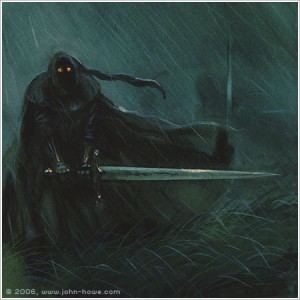 Q: Greetings masters of lore. My question deals with the Nazgul. I know of Khamul, but I have not found the names of the other Nazgul. If they had names, what were they as well as who were they prior to their transformation? Furthermore, is there any story about their creation and why Sauron decided to choose them specifically?
Q: Greetings masters of lore. My question deals with the Nazgul. I know of Khamul, but I have not found the names of the other Nazgul. If they had names, what were they as well as who were they prior to their transformation? Furthermore, is there any story about their creation and why Sauron decided to choose them specifically?
-Reginold
A: Khamul seems to be the only named Ringwraith. What we know of him is given in the section “The Hunt for the Ring” in Unfinished Tales (1980). He was second to the Chief, and his name is given as Khamul the Shadow of the East. Some more about the Nazgul, or the Ulairi, can be found in some of the volumes of the History of Middle-earth, particularly in the section “The Story of Frodo and Sam in Mordor” in Sauron Defeated (1992), and in the work on the Appendices to The Lord of the Rings as printed in The Peoples of Middle-earth (1996). But, unfortunately, the histories of the men who became the Nazgul seems nowhere to be specifically illuminated.
-Turgon
Update!
Okay, we’ve had a number of people writing in and saying that all of the Nazgul are named in one of the Middle-earth games. Yup, we know about that. But the truth is that those names were made up by the people who created the game, not by Tolkien, so we don’t view them as authoritative. They’re simply not in Tolkien anywhere!
– Turgon
Update!
A few eagle-eyed readers have noted a discrepancy between my comment above and Anwyn’s comment an answer from 9/12/99. Technically, Gothmog is described as the “Lieutenant of Morgul,” and this doesn’t tell us whether Gothmog is a Nazgûl, an Orc, or even a Man. Anwyn has interpreted that Gothmog is a Nazgûl. She may be correct, but it is not certain. In any case, a Captain can have more than one Lieutenant, so if Gothmog is a Nazgûl, and Khamul is the second to the Chief, Gothmog could have been the name of another Nazgûl.
– Turgon
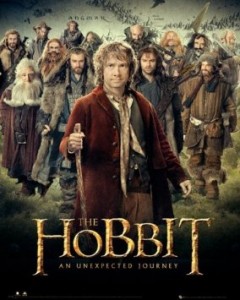 Q: In The Hobbit, at the start of the quest, the dwarves believed that Gandalf was going along with them to Mount Doom [sic], 13 dwarves + 1 Gandalf = 14 in the Party; why were they worried about another member….. and if so surely they could’ve found another greedy dwarf?
Q: In The Hobbit, at the start of the quest, the dwarves believed that Gandalf was going along with them to Mount Doom [sic], 13 dwarves + 1 Gandalf = 14 in the Party; why were they worried about another member….. and if so surely they could’ve found another greedy dwarf?
-John & Tasha Miller
A: Actually, in The Hobbit the ultimate destination was not Mount Doom, but rather the Lonely Mountain, otherwise referred to as Erebor, once the seat of Thrór’s Kingdom in the North. The clearest answer regarding Bilbo’s inclusion with Thorin Oakenshield’s party is found in the pages of Unfinished Tales (1980). Look in Part Three: The Third Age, Section III: “The Quest of Erebor.” Here we learn of a conversation where Gandalf explains to Gimli, Frodo, Pippin & Merry how he had a chance meeting with Thorin many years earlier and learned of the dwarf’s burning desire for revenge. Originally, Gandalf was not impressed with Thorin’s poorly strategized plans of making armies and war against Smaug. He meant to convince him that stealth and secrecy was his best course of action. Gandalf also had other plans of getting rid of the dragon so that Sauron would not use him as an extension of his power. The wizard himself never intended to go along with Thorin’s Quest, but he knew of a certain Hobbit that he thought would be a valuable asset.
“Suddenly in my mind these three things came together: the great Dragon with his lust, and his keen hearing and scent; the sturdy heavy-booted Dwarves with their old burning grudge; and the quick, soft-footed Hobbit, sick at heart (I guessed) for a sight of the wide world.”
The dwarves were very much against adding Bilbo to the party, especially after meeting him in person, and it took a LOT of convincing on Gandalf’s part to get Thorin to yield to his counsel.
“‘Listen to me, Thorin Oakenshield!’ I said. ‘If this hobbit goes with you, you will succeed. If not, you will fail. A foresight is on me, and I am warning you.’”
In the end, a deal was struck where Thorin reluctantly took heed of Gandalf’s urging; allowing Bilbo to accompany them in exchange for Gandalf’s temporary inclusion in the party.
“‘Very well,’ Thorin said at last after a silence. ‘He shall set out with my company, if he dares (which I doubt). But if you insist on burdening me with him, you must come too and look after your darling.’
“‘Good!’ I answered. ‘I will come, and stay with you as long as I can: at least until you have discovered his worth.’”
And so the inspired number of 14 was created at the last possible second. The poor hobbit was “volunteered” because of Gandalf’s unswerving conviction that Bilbo was more important than anyone foresaw, and also because of his exceptional debating skills with Dwarves. Please see Unfinished Tales (1980) for the full account.
-Quickbeam (@quickbeam2000)
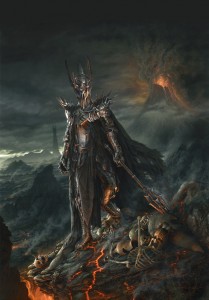 Q: Why did Sauron never come forth himself to do war? Couldn’t he have flattened all of Minas Tirith with one outstretched hand?
Q: Why did Sauron never come forth himself to do war? Couldn’t he have flattened all of Minas Tirith with one outstretched hand?
-from the Q & A Introduction
A: Perhaps. But perhaps not. Remember that without the Ring, Sauron was not at his full power. When he created the Ring, Tolkien tells us that he allowed “a great part of his own former power [to] pass into it, so that he could rule all the others.” This allotment of power to the Ring seems to have been permanent. This is evidenced by the fact that if he *could* have won the War without the Ring, he would have done so. *With* the Ring, he would have been terrifyingly unstoppable. Without it, he had perhaps half, perhaps as much as two-thirds the power he possessed in the end of the Second Age, when it took *all of the combined power of Elves and Men* to defeat him. I.E. the Last Alliance of Gil-Galad and Elendil, when both races brought out and sacrificed their best to defeat him. When at last he was defeated and the Ring stripped from him, he became crippled as regards the amount of his power. Tolkien seems to imply that he was able to nurse himself back to health somewhat when he states “always after a defeat and a respite, the Shadow takes shape and grows again.” But it is clear that he could never return to full power without the Ring. So the conclusion is that if he could be attacked and defeated by Gil-Galad and Elendil, Elendil’s sons and the Hosts of Gil-Galad *with* the Ring, then perhaps the combined might of Gandalf, Aragorn, the Sons of Elrond, Theoden, Eomer & Eowyn, Denethor’s & Theoden’s armies, and Faramir… could have defeated him *without* it. I think it’s safe to say that if he could have captured Frodo and regained the Ring, we probably would have seen him make some attacks in a more personal way, but it’s as Denethor said: “He will not come save only to triumph over me when all is won. He uses others as his weapons. So do all great lords, if they are wise, Master Halfling. Or why should I sit here in my tower and think, and watch, and wait, spending even my sons?”
-Anwyn
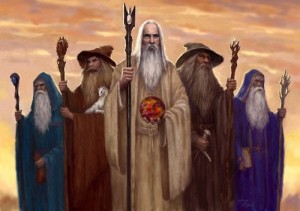 Q: The Istari are a council of wizards. They number 7 total but we only know about 3 of them, Saruman the White/Many colors, Gandalf the Grey/White, and Radagast the Brown. Each had their own particular abilities and interests. Who are the other 4 and what are their interests/abilities?
Q: The Istari are a council of wizards. They number 7 total but we only know about 3 of them, Saruman the White/Many colors, Gandalf the Grey/White, and Radagast the Brown. Each had their own particular abilities and interests. Who are the other 4 and what are their interests/abilities?
-Karl J. Jurek
A: This question has been asked by many visitors to the TheOneRing.Net. As to the Istari, only three seem to play any role in events related to The Lord of the Rings, Saruman the White, Gandalf the Grey, and Radagast the Brown. Saruman’s outburst at Orthanc, when he spoke of ‘the rods of the Five Wizards,’ seems to have been letting out some private information. Nowhere in The Lord of the Rings do we learn anything more about the two other wizards, though Tolkien seems to have considered the question on a few occasions, and come up with a few different theories. Some of Tolkien’s notes on the Istari appear in Unfinished Tales (1980). In one of these passages, apparently written around 1954, Tolkien named the other two as Ithryn Luin, ‘the Blue Wizards,’ who passed into the East and never returned. Some other notes indicate that they were named Alatar and Pallando. To complicate matters, some more notes are published in The Peoples of Middle-earth(1996), in a small section “The Five Wizards” in the section titled “Last Writings.” There Tolkien wrote:
“No names are recorded for the two wizards. They were never seen or known in the lands west of Mordor.” In a still further note, Tolkien wrote: “The ‘other two’ came much earlier, at the same time probably as Glorfindel, when matters became very dangerous in the Second Age. Glorfindel was sent to aid Elrond and was (though not yet said) pre-eminent in the war in Eriador. But the other two Istari were sent for a different purpose. Morinehtar and Romestamo. Darkness-slayer and East-helper. Their task was to circumvent Sauron: to bring help to the few tribes of Men that had rebelled from Melkor-worship, to stir up rebellion…”
These various notes are very interesting, and certainly worth looking up. Plus they give as best an answer as we’ll ever know to questions about the Istari.
-Turgon
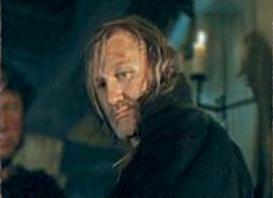 Q: If Samwise hated Bill Ferny so much, (bad enough to waste an apple, by throwing it at him) why then did he name the pony that he bought from Ferny, (the one he loved so much) Bill?
Q: If Samwise hated Bill Ferny so much, (bad enough to waste an apple, by throwing it at him) why then did he name the pony that he bought from Ferny, (the one he loved so much) Bill?
-John & Tasha Miller
A: First of all, your question lies more in the realm of subjective interpretation than it does in hard black & white facts. But my best interpretation is this: If you look closely at the text, Samwise does not actually refer to Bill Ferny as ‘Bill’… it seems he was using the Hobbit-ish practice of referring to an individual by the informal means of last-name-only, ‘Ferny.’ Perhaps because of his contempt for Bill Ferny we never hear Samwise give the courtesy of addressing him by first name. Several chapters later, before the Fellowship makes their departure from Rivendell, Samwise names the pony. Certainly not out of memory of Bill Ferny, but maybe because he was just fond of the name ‘Bill.’
-Quickbeam (@quickbeam2000)
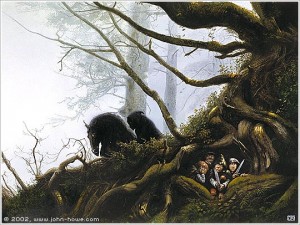 Q: Why do the Black Riders, though painted as so utterly terrifying, seem to have so little power for actual harm?
Q: Why do the Black Riders, though painted as so utterly terrifying, seem to have so little power for actual harm?
-from the Q & A Introduction
A: My answer to this is in two parts: the answer that is indicated by the content, i.e., what is it about the characters that makes them this way, and secondly the fact that it constitutes a literary device that Tolkien used.
Part One: Yes, the Black Riders are terrifying. But what is the main strength of their image? Just that: an image. The tall, black shadow. (Please, don’t anybody jump on the George Lucas/Jar Jar Binks racism bandwagon. I am using “black” here not as a color of a person/creature, but as Darkness, or a Shadow. Evil images, not skin color.) The tall black shadow, towering over smaller creatures, intimidating. Tolkien tells us their weakness flat out. They do not see well, hardly at all, in daylight. Thus they are at the mercy of the black horses for direction and guidance much of the time. They can smell. Well and good, but it takes time to sniff out prey, and as we’ve seen, rescue or help can come in the time it takes to sniff somebody out. The five Black Riders, advancing over the lip of the dell… horrifying image. But what was the main fear? The knife. They had to rely on steel weapons just like the “good guys,” or at least until Frodo succumbed to the temptation of the Ring and became one of them, visible in their world, when they would then be able (presumably) to wrest the Ring from him by force. Again, in Return of the King, we see the Witch-King relying on a weapon, his mace, to kill Eowyn. So when it comes to actual physical combat, they are hampered by their limited daylight vision, and just as reliant upon weapons as any mortal. We’re not talking about Dungeons and Dragons dark mages or dark clerics here, who can cast spells with a single word. No. These are formerly mortal beings who have crossed into the spiritual realm, but are still able to wield a presence in the physical. Personally I think they’re fortunate to be able to wield the influence that they do! Now if Frodo were to put on the Ring, it would be another matter. They got him with the knife when he put it on at Weathertop, and they would have done more had not the others with their flaming brands driven them away. At that point they let them alone not because they couldn’t do more, but because they believed there was no need: the wound would overcome Frodo and all they had to do was follow, and he would fall into their hands. So spiritually, they are a horror to any rational being. Physically, they are hampered, and can be foiled with fire, rushing water, and even by broad daylight.
Part Two: I believe Tolkien deliberately used them this way to create a literary device by which Frodo would have no choice but to continue the journey. Everybody has to have some strong motive for leaving their home and pursuing a Quest. Desire to serve the Good is one motive, but Fear is usually stronger. With these creatures driving behind, Frodo and the gang had no choice but to continue to Rivendell or risk capture and wraith-making at the hands of the Black Riders and the Dark Lord. Since my other answer was so long, I’ll keep to that. I think it’s clear enough.
-Anwyn
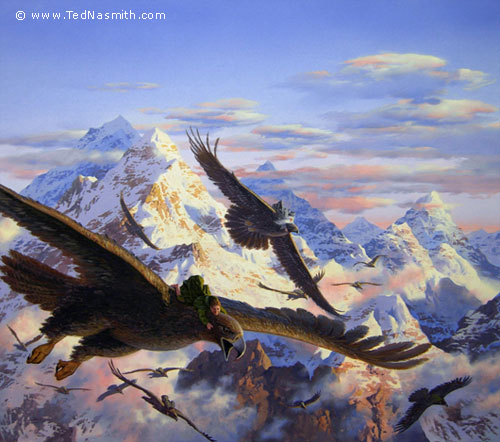 Q: Why do the Eagles never show up until the very last minute?
Q: Why do the Eagles never show up until the very last minute?
-from the Q & A Introduction
A: I must confess I stole this question from a friend of mine who was frustrated with The Lord of the Rings because he felt Tolkien used too much of what is known as “deus ex machina.” Basically what this means is that just as soon as we see the hero getting into a situation that looks totally inextricable, something we never knew could be part of the equation swoops in to rescue them! As I understand it, it’s based on an old technique of Greek Theater–when the hero got into trouble, they raised him out of the action in a chair, signifying that the Gods had stepped in to rescue him. Thus, “deus ex machina” or “machine of the gods.” So the Eagles, in three instances, act very much like our chair of the gods. First in the Hobbit, rescuing the party from Wargs and goblins and coming in at the last minute in the Battle of Five Armies, then in The Lord of the Rings, helping to win the battle before the Black Gate, and most importantly, pulling Sam and Frodo out of the lava once their Quest was complete. Not to mention Gwaihir’s little “side trips,” rescuing Gandalf from the pinnacle of Orthanc and bearing him from the top of Silvertine.
Now why is this, that if they were such a force to be reckoned with, that they did not come south and join the armies to begin with? Why would they only offer help when it was dire? Doesn’t it say something about their character that they would hold back until things were desperate?
My answer is, I readily admit, not verifiable in print. I can only offer a hypothesis that fits the facts and let you take it as you will. My opinion is this: they are animals. Talking animals, yes, but animals nonetheless. As such they are not one of the Free Peoples. Now, Tolkien’s use of animals falls into two categories: much beloved servants, such as the horses of the Rohirrim, Shadowfax and Sam’s faithful Bill. Or, they fall into the villainous category, usually in the form of giant spiders (Mirkwood and Shelob) but also the horrible carrion beasts which carried the flying Riders. (Servitude again, but for the other side.) I think the Eagles fall into this category also, kind of an antithesis to the horrible carrion creatures of the Riders. We do not know about the intelligence of these creatures. They may have been speechless animals, but they retained enough intelligence to know a foe (recall the beast “screaming” at Eowyn after she defied the Witch-King). The Eagles retain that much intelligence and much more, so that they can put forth their strength for the use of the Good when they are most needed, but perhaps know they would not fit into the grand scheme of the war as a regular force. I guess they would fall into the category of Special Forces, used as a last resort! But that is my answer, that as animals they are not one of the free peoples and their primary role is service to the Good, *when* it becomes necessary. Even Shadowfax was not in use all the time, and when Gandalf wasn’t riding him, he did not go out to war as a soldier.
-Anwyn
Update!
Well, folks, some readers thought that I was not specific enough with my Eagles answers. There were several people who wrote in to tell me the following information, so I’m only posting a few versions. Thanks to all who wrote to clarify for me!
–Anwyn
The answer to the question of the Eagles lies in The Silmarillion. It is revealed there, that the Eagles and the Ents were both, in a sense, agents of the Valar (of one particular one, in fact, the one associated with nature-was it Yavanna? I’m at work and can’t look it up). They were created after she saw what had been done in the creation of the dwarves. So the Eagles only interfere when the Valar allow, so the deus ex machina is an appropriate analogy indeed. (There are also one or two instances where they interfere in The Silmarillion – one I recall was the rescue of Fingon-I think-from Thangorodrim.)
–Tim Frankovich
As an aside on the subject of the Eagles, and why they are usually late to the fray… Manwe‘ was the Lord and Master of the winds and the creatures of the winds, and so the appearance of the Eagles at the last minute is seen as a form of Divine intervention (the form being the Valar overriding their usual modus operandi and stepping in to influence events in Middle-earth).
–Tony Hillerson
Q: Did Tolkien ever draw a detailed map of Numenor? If so does anyone out there know where its possible to find one?
-Aaron
A: Tolkien only ever drew one sketch-map of Numenor, and Christopher Tolkien redrew it to appear in Unfinished Tales (1980). It’s facing page one of the Introduction in the Houghton Mifflin hardcover edition.
-Turgon
Update!
Also: For an in-depth look at Numenor and many other fantastic maps of Middle-earth, grab yourself a copy of The Atlas of Middle-earth by Karen Wynn Fonstad. This book has been around for many years, but with Christopher Tolkien’s publication of The History of Middle-earth volumes, many changes were made and a new edition appeared. You’ve never seen anything so comprehensive in your life! Zillions of details from all Four Ages and across all the volumes of Tolkien’s masterworks are represented. Cartography, languages, battles, journeys, and amazing cross-sections of underground cities. I highly recommend it as a companion piece to anything you read by Tolkien, and you’ll never be lost in the woods again! The paperback edition is readily available on Amazon.com.


